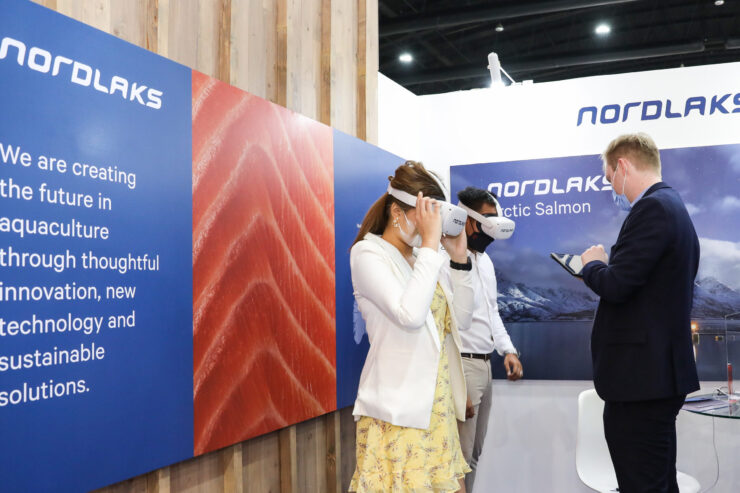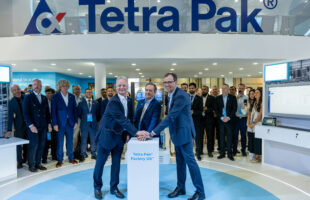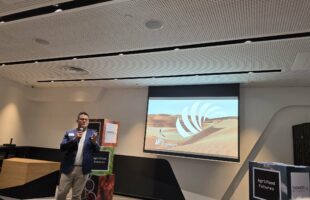
Courtesy of Norwegian Seafood Council
By Cath Isabedra
In an era marked by environmental challenges and the pressing need for sustainable practices, marine agriculture, or aquaculture, holds great potential for addressing the increasing demand for seafood while protecting our oceans. However, achieving true sustainability in this field can take time and effort. It requires a comprehensive understanding of aquaculture’s goals and stakeholders’ collective responsibility to become stewards of the ocean and marine life.
Aims of Aquaculture: Balancing Ecology, Society, and Economy
With heightened conscious consumption, there has been a notable shift in seafood consumption. However, our oceans, as vast as they are, can also suffer. Unsustainable fishing practices, such as overfishing, destructive fishing methods, and bycatch, can deplete fish populations, damage marine habitats, and disrupt ecosystems.
Overfishing is a significant threat to the health of our oceans. Consuming a variety of seafood species, including lesser-known or underutilized fish, can help alleviate the pressure on popular fish stocks and contribute to biodiversity conservation.
According to the Norwegian Seafood Council (NSC), “The ocean could supply over six times more food than it does today (364 million metric tons of animal protein). This number represents over two-thirds of the edible meat that the FAO estimates will be needed to feed the future global population.”
Sustainably expanding unfed aquaculture (i.e., aquaculture of species that do not depend on feed inputs for nutrition, such as bivalves and seaweed) can substantially increase nutritious food and feed with a lower impact on the marine environment. Low-income and food-deficit countries, as defined by FAO, depend more heavily on fish for their animal protein.
Furthermore, fish are particularly important in small island developing states in tropical regions, which are most vulnerable to climate change and suffer from weak fishery management and unsustainable aquaculture development. Improving fisheries management and aquaculture sustainability can pay large dividends to these countries in the form of food from the sea.
As a sustainable practice, aquaculture must strike a delicate balance between ecological responsibility, social welfare, and economic viability. Firstly, it should mitigate the overexploitation of wild fish stocks by reducing pressure on marine ecosystems through controlled fish, shellfish, and seaweed production. Aquaculture can help alleviate the strain on fragile oceanic habitats and declining fish populations by providing an alternative to traditional fishing.
Sustainable aquaculture enhances social welfare by creating economic opportunities for coastal communities. By fostering local employment, supporting livelihoods, and promoting equitable distribution of benefits, responsible aquaculture can contribute to the socioeconomic development of communities dependent on marine resources.
The economic viability of aquaculture is crucial for its long-term sustainability. The industry can ensure economic resilience while minimizing environmental impacts by optimizing production methods, reducing operational costs, and investing in research and development.
Becoming Stewards of the Ocean and Marine Life: Collaboration and Responsibility
The transition towards sustainable marine agriculture requires stakeholders to embrace their roles as stewards of the ocean and marine life. Governments, industry players, researchers, consumers, and local communities must collaborate and take collective responsibility to drive positive change.
Governments play a vital role in creating robust regulatory frameworks that promote sustainable practices and ensure compliance. By establishing stringent environmental standards, enforcing responsible farming protocols, and incentivizing innovation, policymakers can create an enabling environment for sustainable aquaculture.
Industry players have a responsibility to implement best practices that prioritize environmental sustainability. This includes responsible feed sourcing to reduce pressure on wild fish stocks, adopting eco-friendly farming systems, minimizing the use of antibiotics and chemicals, and implementing effective waste management strategies. Transparency and accountability in supply chains are also essential to build consumer trust and promote sustainable seafood choices.
Researchers are critical in advancing the knowledge and technological innovation necessary for sustainable aquaculture.
Consumers also play a significant role by making informed choices and demanding sustainable seafood options. By supporting certification programs such as the Marine Stewardship Council (MSC) and the Aquaculture Stewardship Council (ASC), consumers can drive the market demand for responsibly sourced seafood, encouraging producers to adopt sustainable practices.
The NSC shares that our ocean stocks remain balanced and the assurance that there will be enough seafood for the future generation. Less greenhouse gas emission, less farmed land.
Food production contributes to climate change. However, food production from the sea may be advantageous from a climate change perspective for three reasons. First, because their production occurs in the ocean, capture, and aquaculture production do not directly drive land conversion like land-based food systems (e.g., conversion from forests to farms and areas for raising livestock).
Second, for many marine species, the greenhouse gas emissions associated with their production are comparatively low. Greenhouse gas emissions per portion of the protein associated with producing large pelagic, small pelagic, and white fish capture fisheries and molluscs and salmon in aquaculture are lower than terrestrial animal production.
Norwegian aquaculture tops the charts of the most sustainable animal protein production. The Coller FAIRR Index, which ranks the world’s most sustainable animal protein producers, awarded three Norwegian aquaculture companies.
Of the four companies identified as being ‘low risk,’ three are Norwegian aquaculture producers. The world’s largest salmon farmer, Mowi, once again took the top spot. It’s followed by Greig Seafood at number two and Lerøy Seafood coming in at number four.
All have held these positions following the rankings in 2021. In addition, Salmar ASA claims 10th place in the ranking. As the world’s only comprehensive assessment of animal proteins, the index considers various factors contributing to a protein’s overall score. This includes greenhouse gas emissions, water use, biodiversity, animal welfare, and antibiotic use, as working conditions and governance.
The Norwegian Seafood Council’s Notable Contributions
The Norwegian Seafood Council has been at the forefront of promoting sustainable practices in aquaculture. Notably, in recent years, they have made significant contributions that have advanced the cause of sustainability.
One noteworthy area of focus has been developing and promoting sustainable fish feed alternatives. Recognizing that traditional fish feed reliant on fishmeal and fish oil derived from wild-caught fish contributes to overfishing, the Council has actively supported research and implementation efforts for alternative feed ingredients. Plant-based proteins and microalgae are emerging as viable alternatives, reducing the industry’s dependence on wild fish resources and addressing a significant environmental concern.
The Council has made significant strides in establishing rigorous regulations and certifications for the Norwegian aquaculture industry. By ensuring compliance with strict environmental standards and supporting sustainable farming practices, they have elevated the overall sustainability of Norwegian aquaculture. Their initiatives have helped create a culture of responsibility, with practices and standards being emulated and adopted globally.
The NSC has initiated campaigns such as “Sustainable Aquaculture,” to raise consumer awareness and promote sustainable seafood choices.
The Norwegian Model
- No throwing back: a pioneer in sustainability, Norway introduced a ban on discards in 1987, while the EU banned the practice in 2019, more than 30 years after.
- Quota system: it is also the first country in the world to introduce a quota system for important species such as cod. Regulators, industry, and science work together to protect vulnerable areas, clean seas, and sustainable fish stocks. Norway’s fishermen must land what they catch but cannot profit from anything outside their quotas.
- Protection: the stock assessments protect younger fish classes from being caught, allowing new generations of fish to grow large enough before being subject to catching, which can benefit the country both ecologically and economically. Guiding sorting grid size, mesh net size, and the size of hooks used are designed to maximise targeted catch while ensuring larger or smaller fish are spared.
- Control: the Norwegian Coast Guard spends 70 per cent of their time and resources to ensure fishing activities align with regulations. Closing fisheries and banning certain fishing equipment or methods can protect other vulnerable parts of the ecosystem. This ensures fishing activities are carried out at the right time, in the right areas, and with the right equipment. While on land, regular inspections of fishing vessels arriving in port and at sea are being conducted.
NSC also published Top Seafood Consumer Trends in 2021, the first in a series of reports that took a deep dive into what is happening in the world’s trend, and how and why this is important to the seafood industry. The purpose is to inspire innovation and new perspectives on how technology, politics, and finance can be used to create a more sustainable and prosperous relationship with the sea.
The United Nations Climate Panel has highlighted the importance of marine aquaculture in producing enough healthy and sustainable food for an increasing population. The world needs systematic and industrial food production, as well as efficient logistics and distribution. Technology and innovation must be strengthened at all stages – from the production and distribution of feed to the processing, packaging, and distribution of finished products. And this is what the Norwegian seafood industry is trying to achieve.
Embracing Norwegian Aquaculture Practices in Asia
Sustainable aims in marine agriculture, encompassing ecological responsibility, social welfare, and economic viability, are crucial for our oceans’ long-term health and productivity. Achieving these aims requires collective responsibility and collaboration among governments, industry players, researchers, and consumers. The NSC’s notable contributions exemplify the progress toward sustainable aquaculture.
Seafood from Norway is responding to food security in Asia.
Food from the sea is uniquely poised to contribute to food security because fish is a highly efficient form of protein—150 grams of fish provide 50–60 percent of an adult’s daily protein requirement. In developing regions, seafood (freshwater and marine sources) provides a cheap and locally available food source. Seafood could play a particularly significant role in addressing hunger in Asia—which accounted for nearly two-thirds of the world’s hungry in 2017—since that continent is home to the major marine capture and aquaculture-producing countries.
By embracing sustainable practices and engaging in the stewardship of the ocean and marine life, we can build a more resilient and responsible marine agriculture industry, ensuring the preservation of our oceans for future generations.
This story was first featured in our issue, The Blue Revolution: Merging Technology and Sustainability in Aquaculture.








